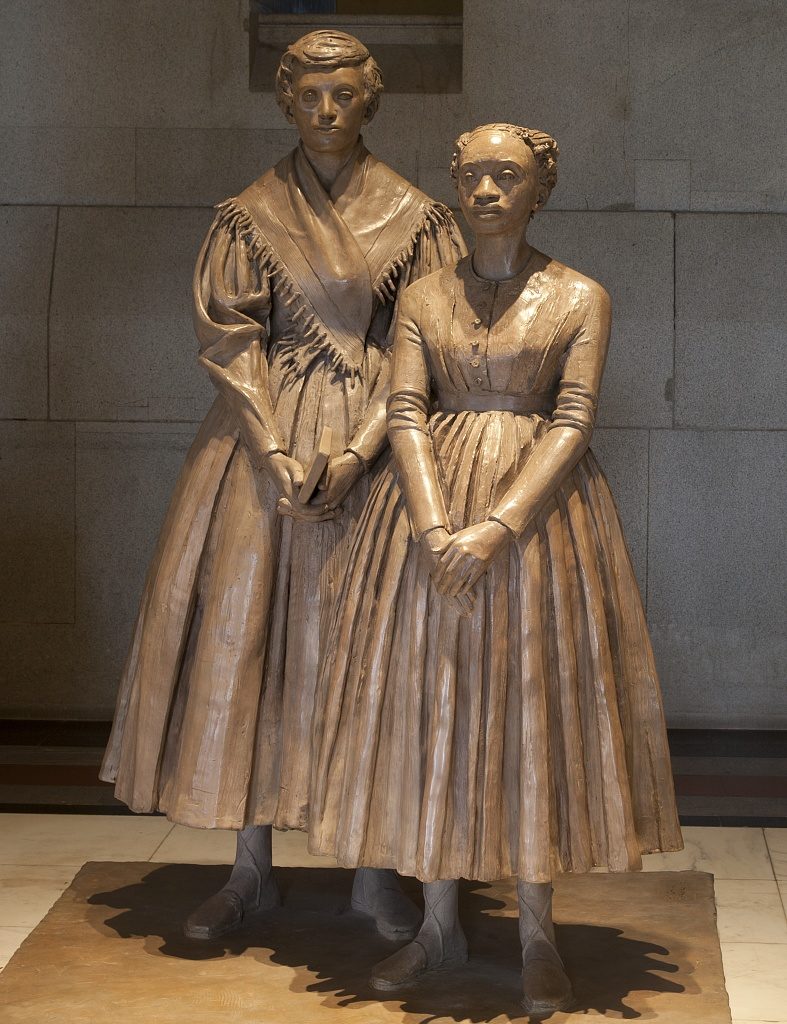(c) Connecticut Explored Inc. Winter 2019-2020
Subscribe/Buy the Issue!
Disruptions are the inflection points of history. Sometimes disruptors are major historical figures. Sometimes their names are lost to history and come in small packages—such as the child knitters who struck for better wages in our story on page 46.
Children more recently disrupted the status quo after a field trip to the State Capitol. In 1994 a group of New Canaan Country School fourth graders saw the statue of state hero Nathan Hale in the capitol. They wondered who the state heroine was. After finding there wasn’t one, the class approached Sen. William H. Nickerson, R-Greenwich, through their teacher Kristin Quisgard. Nickerson agreed to introduce a bill to the state legislature naming Prudence Crandall, the teacher who opened a school in Canterbury for black girls in 1833 (a disrupter in her own right), as state heroine.
The campaign got national attention. Nickelodeon, the cable television channel for kids, showed up to tape the legislative hearing on the bill, The Hartford Courant reported on March 3, 1995. Twenty students—now fifth graders—were on hand to testify. The bill passed later that spring. A side benefit was that the students learned first-hand about how the legislative process and citizen advocacy work.
Five years later, another group of fourth graders visiting the capitol building, this time from Bristol’s Ellen P. Hubbard School, wondered why there was no statue of the state heroine. Their teacher appealed to Rep. Betty Bouckus, D-Plainville, who introduced legislation in support of commissioning a statue. The students organized a “Pennies for Prudence” fundraising campaign, raising $3,000 toward the $100,000 project, according to ConneCT Kids at ct.gov. (The State of Connecticut paid for the bulk of the commission.) The statue—only the second statue at the capitol of a woman, the other representing Governor Ella Grasso—was dedicated in October 2008.
Fortunately, kids no longer need to strike for better wages, but it is heartening to see the increasing engagement of students in fundraising and advocacy for causes they believe in. Perhaps one of the most impressive Connecticut examples is that of West Harford’s Alexandra Scott, who in 2000 at age four started a lemonade stand in her front yard to raise money to fight cancer, with which she had recently been diagnosed. Alex died of the disease just four years later at age eight. In her too-short life, she inspired people to give $1 million to find a cure for childhood cancer. Today the Alex’s Lemonade Stand Foundation has raised more than $150 million, according to its website. Never underestimate the power of a child.
Support the Friends of Connecticut Explored
 I invite you to support our work at Connecticut Explored through a gift to the Friends of Connecticut Explored. In addition to publishing four issues of the magazine each year, Connecticut Explored is working to ensure that our next generation of kids has a foundational knowledge of Connecticut history through Where I Live: Connecticut and Venture Smith’s Colonial Connecticut. Eighth-graders and high-school civics classes are learning about the state’s governance and constitutional history through our free Constitution of 1818 online resources developed from our fall 2018 issue. We couldn’t do this work without Friends of Connecticut Explored’s support.
I invite you to support our work at Connecticut Explored through a gift to the Friends of Connecticut Explored. In addition to publishing four issues of the magazine each year, Connecticut Explored is working to ensure that our next generation of kids has a foundational knowledge of Connecticut history through Where I Live: Connecticut and Venture Smith’s Colonial Connecticut. Eighth-graders and high-school civics classes are learning about the state’s governance and constitutional history through our free Constitution of 1818 online resources developed from our fall 2018 issue. We couldn’t do this work without Friends of Connecticut Explored’s support.
Please help us continue this work with your gift to the Friends of Connecticut Explored. Gifts of $100 or more received by December 31 will be listed in the Spring 2020 issue; please consider $170 for our 17th year!


